第46章 5(2)
To give an illustration of this. The water-courses in gardens are so constructed as to distribute water from one single source or fount into numerous channels, which divide and subdivide so as to convey it to all parts; and, again, in house-building stones are thrown down along the whole ground-plan of the foundation walls; because the garden-plants in the one case grow at the expense of the water, and the foundation walls in the other are built out of the stones. Now just after the same fashion has nature laid down channels for the conveyance of the blood throughout the whole body, because this blood is the material out of which the whole fabric is made. This becomes very evident in bodies that have undergone great emaciation.
For in such there is nothing to be seen but the blood-vessels; just as when fig-leaves or vine-leaves or the like have dried up, there is nothing left of them but their vessels. The explanation of this is that the blood, or fluid which takes its place, is potentially body and flesh, or substance analogous to flesh. Now just as in irrigation the largest dykes are permanent, while the smallest are soon filled up with mud and disappear, again to become visible when the deposit of mud ceases; so also do the largest blood-vessels remain permanently open, while the smallest are converted actually into flesh, though potentially they are no whit less vessels than before.
This too explains why, so long as the flesh of an animal is in its integrity, blood will flow from any part of it whatsoever that is cut, though no vessel, however small, be visible in it. Yet there can be no blood, unless there be a blood-vessel. The vessels then are there, but are invisible owing to their being clogged up, just as the dykes for irrigation are invisible until they have been cleared of mud.
As the blood-vessels advance, they become gradually smaller and smaller, until at last their tubes are too fine to admit the blood.
This fluid can therefore no longer find its way through them, though they still give passage to the humour which we call sweat; and especially so when the body is heated, and the mouths of the small vessels are dilated. Instances, indeed, are not unknown of persons who in consequence of a cachectic state have secreted sweat that resembled blood, their body having become loose and flabby, and their blood watery, owing to the heat in the small vessels having been too scanty for its concoction. For, as was before said, every compound of earth and water-and both nutriment and blood are such-becomes thicker from concoction. The inability of the heat to effect concoction may be due either to its being absolutely small in amount, or to its being small in proportion to the quantity of food, when this has been taken excess. This excess again may be of two kinds, either quantitative or qualitative; for all substances are not equally amenable to concoction.
The widest passages in the body are of all parts the most liable to haemorrhage; so that bleeding occurs not infrequently from the nostrils, the gums, and the fundament, occasionally also from the mouth. Such haemorrhages are of a passive kind, and not violent as are those from the windpipe.
The great vessel and the aorta, which above lie somewhat apart, lower down exchange positions, and by so doing give compactness to the body. For when they reach the point where the legs diverge, they each split into two, and the great vessel passes from the front to the rear, and the aorta from the rear to the front. By this they contribute to the unity of the whole fabric. For as in plaited work the parts hold more firmly together because of the interweaving, so also by the interchange of position between the blood-vessels are the anterior and posterior parts of the body more closely knit together. A similar exchange of position occurs also in the upper part of the body, between the vessels that have issued from the heart.
The details however of the mutual relations of the different vessels must be looked for in the treatises on Anatomy and the Researches concerning Animals.
So much, then, as concerns the heart and the blood-vessels. We must now pass on to the other viscera and apply the same method of inquiry to them.